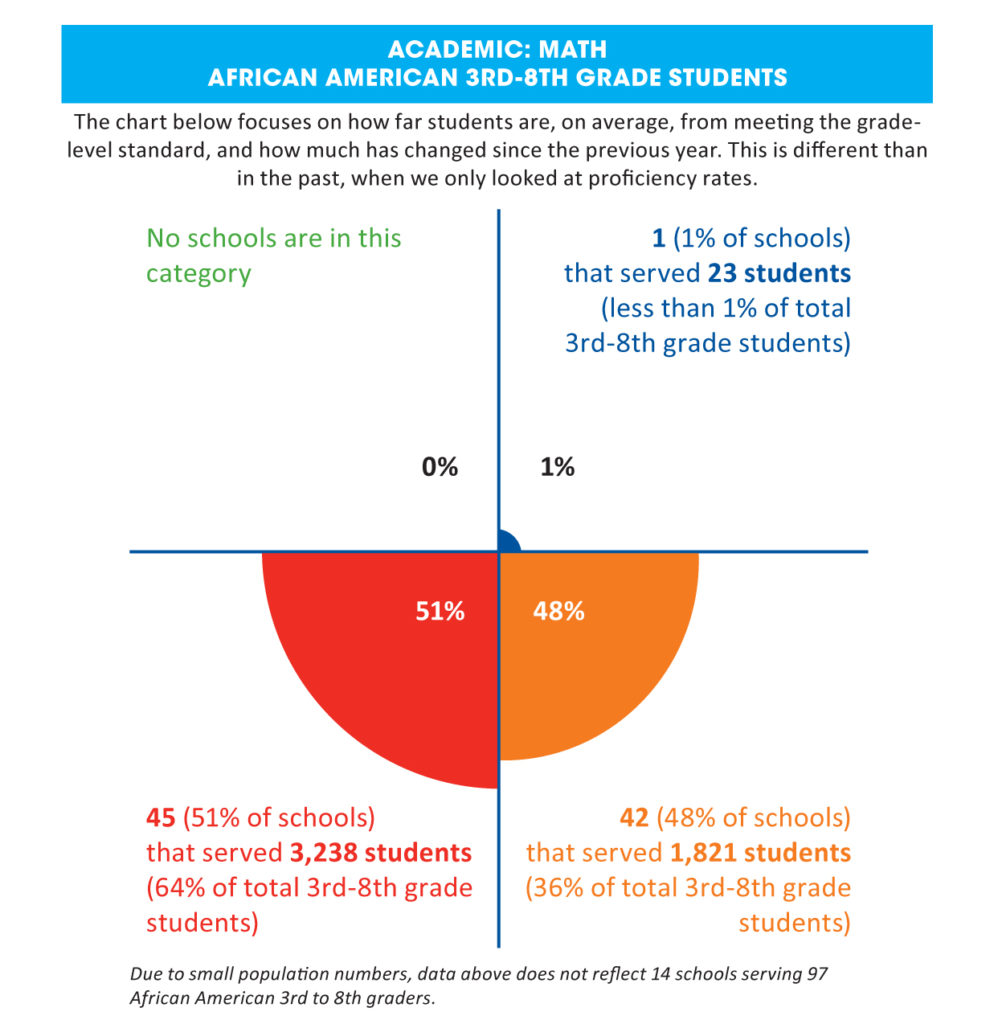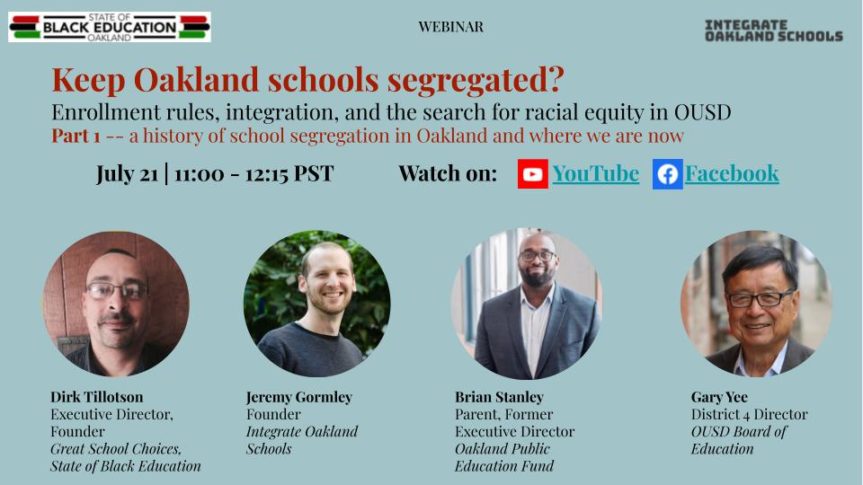While most criticize school segregation in principle, very few fight it in practice. Our enrollment rules were designed and still operate to separate children into separate and unequal schools. This will be the topic of our first in a series of webinars, “Desegregate Oakland Schools Now?” please join us 7/21 at 10 Pacific. And there are things we can do, like change our enrollment rules–as the recent pilots did at Brewer, Sequoia, and Chabot.

This has real effects for children in terms of access to opportunity. We have schools where most all children are on grade level and schools where almost nobody is. We have schools where all the children are Black Brown and low income, and schools where very few students are, and often they sit a stone’s throw from each other. Check out school A and school B one is 92% free and reduced, not a child reading on grade level and school B, 1% free and reduced, 89% reading on grade level, 1.9% Black. The disparities should be appaling.
| School | School A | School B | School C | School D |
| Free/reduced lunch | 92% | 1% | 74% | 8% |
| Reading proficiency | 0% | 89% | 13% | 79% |
| Math Proficiency | 1% | 88% | 15% | 78% |
| Driving Distance form School A in miles | N/A | 3.7 | 4.0, less than .5 miles from school B | 6.6 |
| % African American | 62.7% | 1.9% | 53.5% | 7.4% |
It is good to see OUSD starting to look at its rules and who they serve and disserve. And it is even better to see that the results of the so called “enrollment pilots” at Sequoia, Chabot and Brewer, which more than doubled the number of acceptances from low income neighborhoods from 45 to 95.
You can see the details in this OaklandSide article, which had a good quote from a Brewer teacher, on how changing the rules can change the outcomes, and at least in this case without displacing any neighborhood children.
“Brewer is one of the schools where, even if every single fifth grader in our neighborhood went to Brewer for sixth grade, we would still have to fill half the school with students from all over the district. We’re just making it so that some of those students have a priority over the others, which hasn’t existed in the past,” she said. “This is something allowing us to show what our priorities are. And hopefully the district will find theirs as well.”
As stated, this is really an issue of priorities. At the State of Black Education in Oakland (SoBEO) we have heard for years that Black families, who the system should owe a debt to, often have the least access to quality schools, and even when we get into them we are sometimes treated as second class citizens. It doesn’t matter how many schools you can apply to in a fancy enrollment system, if neighborhood and sibling preferences assure that you wont likely get into any of them. We heard these stories and saw the data.
Less than 1% of Black children, 23 total children, attended a Oakland school that was above the state average on Math. Its not surprising that only 11.5% of Black children in OUSD can do math on grade level.
You can see the data from Oakland Achieves here.

That is why we fought for the Opportunity Ticket, which created an enrollment preference for families at closing schools. And why we need to keep pushing the system to change. Our enrollment zones look a lot like the old redlining maps, and they have the same effects. To privilege some and disadvantage others, if not explicitly now, in a de facto form.
There are a lot of Black Lives Matters signs, but if Black minds are atrophied and Black opportunity doesn’t exist, then its an empty slogan, meant to soothe White guilt more than remedy Black inequality. So, we need to go further here, we need more than “pilots” over time, and we need more action at the individual pilots in some cases (like Chabot whose numbers did more than double but only went from 3 to 7 students from low income neighborhoods).
The system’s rules, and also decisions by individual families tend to drive us apart. Where we need to examine and implement ways to authentically bring us together. And pilots are great, but we actually need a districtwide strategy that reflects our values, and more districtwide enrollment changes that will make those real.
Or maybe the current system actually accurately does reflect our real values and we are city of hypocrites.
We can start with enrollment reforms like these, that prioritize spaces to underserved families, but we need to go further, and work to eliminate hyper segregation district wide, assuring that we don’t have schools where almost all students are higher needs and others where almost none are.
This is entirely doable. It will just take will and for us to live by the values we espouse. Both in the systems rules and in the individual decisions that families make.

